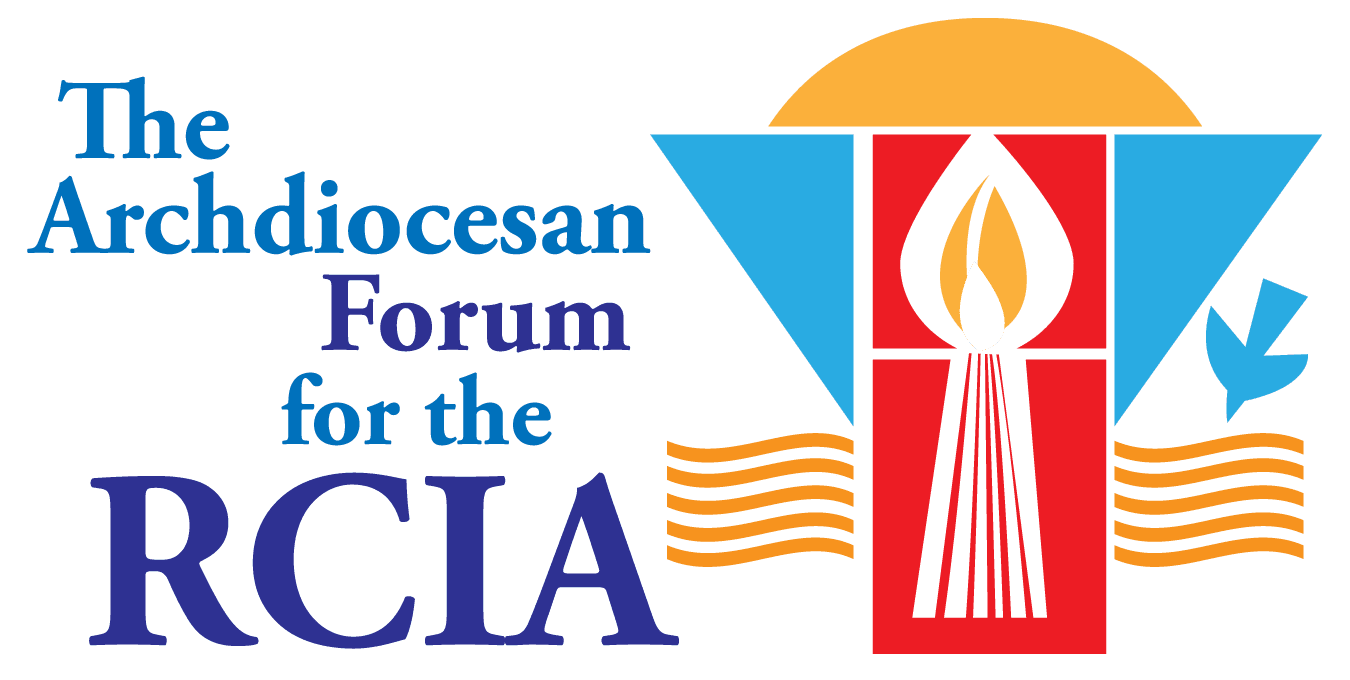by Terry Zobel
The Rite does not have a whole lot to say about this period and it doesn’t really give us much in the way of how-to instructions for its implementation. What is does say can be found in paragraphs 244-51—a mere eight paragraphs. Those paragraphs give us the flavor, the tone, the mood for this rich period. For me, this period has three distinct elements.
First, it’s a time to look back on the whole journey and to remember how far we’ve come together. It’s a time to savor the experience and to unpack the meaning of the symbols. If you’ve ever been to a North American Forum institute, you know that while Mystagogia is the fourth period of the rite, its methodology is practiced throughout the process. Whenever we celebrate a rite, we take the time to help the Catechumens and Candidates reflect on their experience. Although the reflection process begins with questions about what they experienced, what touched them, moved them, etc. it is not complete until they can make the connection between what they experienced and who the God of that experience is and what this God is like. Rites are only “the finger pointing to the moon.” Our job is to help them to see the moon.
Consequently, by the time the Neophytes come to the Easter season, the rhythm and the practice of mystagogical reflection is nothing new. What is new is that now they have celebrated the Sacred Triduum and have been bathed, anointed and fed at the table of the Risen Lord. The senses and emotions have been stimulated to the max in profoundly moving liturgies having washed feet, venerated the cross, gathered around the fire, heard the Word (story), been immersed in water, sealed with oil, and, at last, feasted on bread and wine. All this must be shared. In my parish, we gather the first night of Mystagogia in the church with all the “smells and bells” from the Triduum around us to see and smell and touch again as we reflect on the experience of the Three Days. We then begin at least a two-week process of reflecting on what that means.
Second, it’s a time to celebrate and give thanks for all that God has done in each one of us as individuals and as a community. That celebration takes many forms, the most obvious, of course, is gathering for the Sunday Eucharist. But also, our weekly sessions from Easter to Pentecost are more festive. At all of our sessions we drink wine and break bread as we celebrate and remember how good God is. And just before Pentecost, we have a family picnic with all the kids and spouses, sponsors and godparents.
Third, it’s much like a honeymoon—the time when we begin a new life with each other. We move from Word to Sacrament, from book to table, from church to world, from being served to being servants. Having reflected on what has happened, on how good God is, we prepare to tell our own story, to learn how to continue the growth that has begun in us, and to discern more deeply just what it is that God is calling us to be and do since we now live no longer for ourselves. Just as a wedding ceremony is just the beginning of married life, so too, the Triduum is just the beginning of a life in Christ.
The elements of this period—remembering, celebrating, learning to how to give witness, how to continue our conversion, and how to discern our call—are the tasks of a lifetime of faithful discipleship. Mystagogy, one of the greatest gifts of the RCIA, is for all the People of God.
